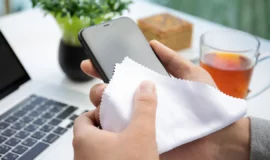
Smartphone hacking, even targeting iPhones, is becoming increasingly common, to the point that hackers can now infiltrate your phone without any need for you to click on anything. This alarming trend emphasizes the critical importance of enhancing iPhone security.
A new vulnerability known as “Blastpass” has recently come to light, impacting iOS, iPadOS, watchOS, and MacOS Ventura. What’s alarming about this vulnerability is that it can be exploited without any action on the part of the user. In fact, there have already been documented cases of exploitation. To safeguard your Apple devices – iPhones, iPads, Watches, and Macs – it’s imperative to promptly update them with the latest Apple software.
This vulnerability presents a significant threat, potentially enabling malicious hackers to gain unauthorized access to your iPhone and spy on your activities. The alarm was sounded by researchers at the University of Toronto’s Citizen Lab, who not only identified the issue but also disclosed that hackers were actively exploiting it.
In this blog post, we will delve into strategies to bolster your iPhone security against immediate threats posed by hazardous apps.

How to Secure Your iPhone in 4 Simple Steps
Worried that someone you trusted might have installed an app on your device without your permission? You can take action by checking the list of all installed apps and reviewing how each one accesses your information. If you see an app with access permissions that you don’t recall granting, it’s a good idea to uninstall that app. Your data security matters, so stay vigilant!
Delete an App From the App Library
You are only a few steps away from deleting a malicious app from your phone:
- Go to the Home Screen.
- Swipe left past all your Home Screen pages to get to the App Library.
- Tap in the search field, then locate, touch, and hold the app icon until the menu appears.
- Tap Delete App to delete it.
Remove an App From the Home Screen
Simply follow these steps:
- Touch and hold the app on the Home Screen.
- Tap Remove App.
- Tap Remove from Home Screen to keep it in the App Library, or
- Tap Delete App to delete it.

Apple products are typically known for their resistance to malware and online attacks. However, as hackers grow increasingly desperate and daring, their attacks become more audacious.
Fortunately, iPhones come equipped with built-in mechanisms to safeguard against such malicious activities. To fully benefit from these safeguards, it’s essential to follow these practices:
- Set a strong password.
- Use Face ID or Touch ID.
- Turn on Find My iPhone feature.
- Allow or disallow access to some commonly used features without unlocking the phone.
- Keep your Apple ID secure.
- Sign into websites and accounts with passkeys instead of a password.
- Use Sign in with Apple.
- Let your phone create strong passwords for you.
- If your personal safety is at risk, you can use Safety Check to immediately stop sharing information.
- Control app tracking.
- Control what you share with apps.
- Review the privacy practices of apps.
- Protect your email activity.
- Hide your personal email address.
- Use the internet more privately with iCloud Private Relay.
- Manage your privacy to protect yourself against malicious websites.
- Use the Lockdown Mode when under cyberattack.
For more information on how to perform the above mentioned and beef up iPhone security, consult the iPhone User Guide.
In extreme cases, a cyberattack may render your phone unusable, in which case you might consider purchasing a new one. For the widest selection of both new and used iPhones in Pakistan, please visit OLX Pakistan’s listings.
Suggested blogs for you:
How to Increase Your Laptop Speed? Simple and Easy to Follow Tips and Tricks








Leave a Reply